Manage Font Families
Manually edit families and apply smart merge & split suggestions.
What is a font family?
When you’re working with fonts you often have the choice to use different font weights (light, regular, bold, etc.) or italic variants. These fonts share the same design characteristics, but have individual variances. Together they form a font family, the family members are related. You can combine multiple variants in your typography for stylistic purposes or to apply emphasis in your typography.
In a more technical sense, the family of a font is defined by its family name, which is stored in the meta data of a font file. A type designer defines this family name on creation. For example: Helvetica Bold and Helvetica Regular are two fonts that both have the ‘Helvetica’ family name.
Font family names
There are no formal rules about what fonts should be members of the same family. The family name can be anything and is mainly used to conveniently group fonts. Typeface app reads the font meta data and can group fonts that have the same family name, such that you can focus on the core design features.
Since type designers are free to choose family names, there may be fonts where the defined family name is not very convenient. Fonts may be incorrectly grouped into the same family, or split into multiple individual families.
With all the numerous fonts available today you can imagine that two unrelated fonts, made by different designers, accidentally have the same family name. It does not make sense to group these fonts, since both may have entirely different design characteristics.
Or your font library may contain multiple editions of the same typeface, designed by different foundries. Sometimes a foundry might prefix the family name with their foundry name, to separate them from other editions, but that’s not always the case. While both editions share the same core design in this case, you still want to be able to separate them to be able to use a specific edition.
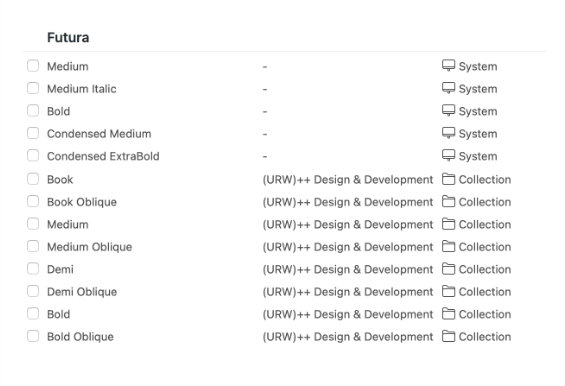
On the other end of the spectrum, some font variants may be created with each their own individual family name. In that case the fonts are not grouped at all, because the family name is not the same. But the fonts are in fact related, so it would be appropriate to group them.
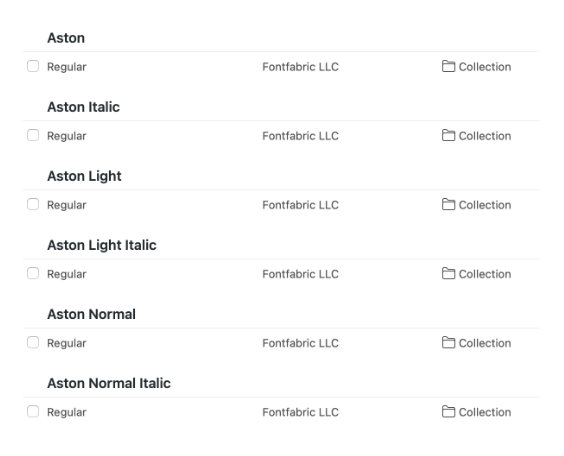
Editing incorrectly grouped fonts
The Typeface Family Editor allows you to artificially group fonts into custom families. You can merge incorrectly split fonts, or split fonts that are inconveniently grouped together.
Select the fonts you want to edit in the Typeface main window, then right click and choose > . This will launch the Family Editor which shows the targeted font families.
To view all the font families in your library choose > from the main menu.
The Family Editor window displays your font families and their members. The first column shows the font variant name. This is typically ‘Light’, ‘Regular’, ‘Bold’, ‘Italic’ etc. Incorrectly split fonts may often show ‘Regular’ here, even though their full font name includes the actual variant name. Don’t worry if a family contains multiple fonts with the same variant name, that’s fine.
The second column shows the font foundry (manufacturer) and the last column indicates the location where a font is imported from.
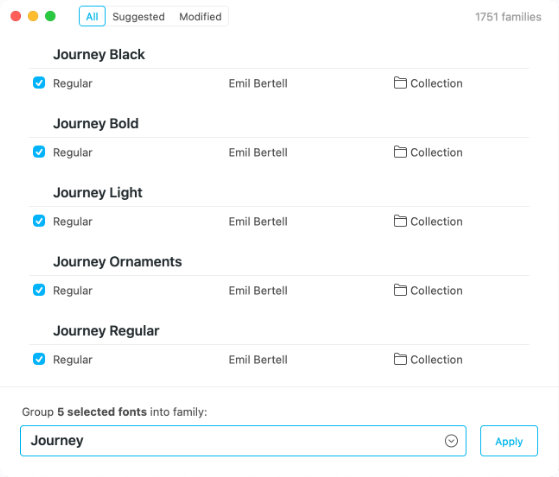
The checkboxes mark which fonts are currently targeted. Double click or Command-click on a font to target it. Shift-click to select ranges. You can also double click on a family name to select all family members at once.
When the fonts you want to edit are selected enter the wanted family name in the text input at the bottom. You can click the arrow dropdown to view some suggested names. Finally choose Apply to group the targeted fonts into a single family.
Keep in mind that all fonts with the same family name will be grouped together. If the entered family name already exists the app may ask if you want to merge the targeted fonts with the fonts from the existing family.
Edited families will be visible in the Modified tab of the Family Editor. Fonts that have been modified show their original family name in grey. You can revert your edits by right clicking on a font and choose . The modified tab also allows you to revert all fonts to their original family.
Note that your font files, which contain the actual family information, are not modified. That means that family changes you make are only visible in Typeface, not in other apps.
Merge & split suggestions
Besides manual grouping fonts you can also effortlessly apply automatic family suggestions. Typeface suggests merges and splits based on font meta data and file locations.
To view family suggestions choose > from the main menu then click on the Suggested tab at the top of Family Editor window. You can click on the Merge or Split button to apply a suggestion.
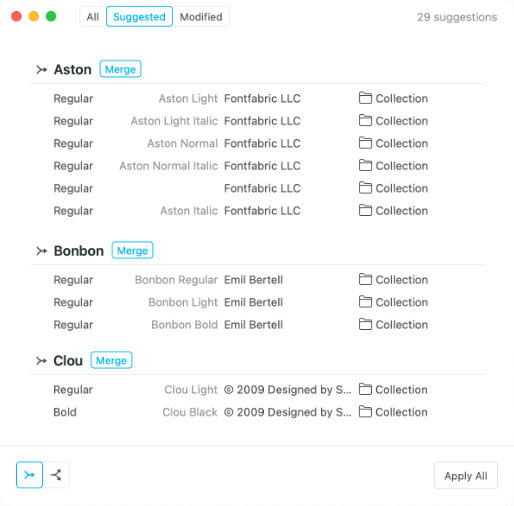
A merge suggestion will merge fonts from different families into a single family. All fonts that will be part of the new family are displayed in the list. The original family name of a font is shown in light grey. If no original family name is displayed that means the font is already part of the suggested family.
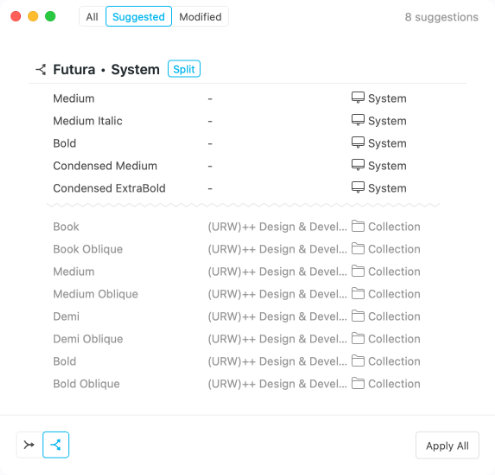
A split suggestion splits a subset of family members into a different family. The split fonts are shown first. The fonts that stay in their original family are shown in lighter grey. The suggested family name is based on the location you’ve imported the fonts from.
The two merge and split icons in the bottom toolbar allow you to filter suggestion of a specific type. Click on the Apply All button to apply all displayed suggestions at once.
Once you’ve applied some suggestions you can find the edited families by choosing the Modified tab. You can revert the edited families, or manually edit them later in the All tab.
When you manually target some fonts to start the Family Editor, Typeface will only show suggestions for those particular fonts. There may not always be suggestions available.
Viewing custom font families in other apps
The edits you make in Typeface are stored in the Typeface library, similar to tags. Typeface app does not edit the actual font metadata stored in your font files, as defined by the type designer.
Design application don’t have access to these edits, they simply look at the font metadata to determine which fonts are grouped together. Therefore the font family changes you make in Typeface are only visible in the app itself.
If you want to edit the actual font metadata you can use a dedicated font editor. Font editors allow you to change any aspect of a font file, including the family meta data.
Note that editing a font may be against its terms. Make sure to check the font license to see if editing is allowed.
Changing the main preview of a family
When grouping fonts by family Typeface automatically displays the font that is closest to regular. This is done based on font meta data. In most cases you’ll see the regular font instead of a bold or italic variant, but for some families the meta data may be incorrect or the perfect pick may be ambiguous.
You can adjust the displayed style by manually picking the main preview of a family, such that you’ll always see the font you want to see. This is particularly helpful for font families that have symbolic or swash variants which may’ve been picked instead of a regular variant.
To change a main preview:
- Right click (or Control click) on a font
- Choose the submenu
- Click on (or hold down the Option key)
- Choose one of the styles to set as the main preview
Alternatively open the Family Editor by choosing > from the main menu. Then click on one of the main preview icons on the right to adjust the main preview of a family. You can do this for original families as well as custom families that are split or merged.